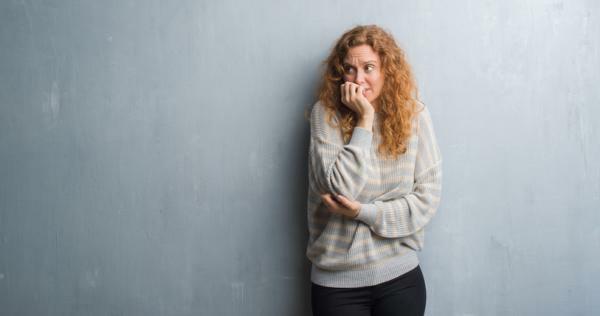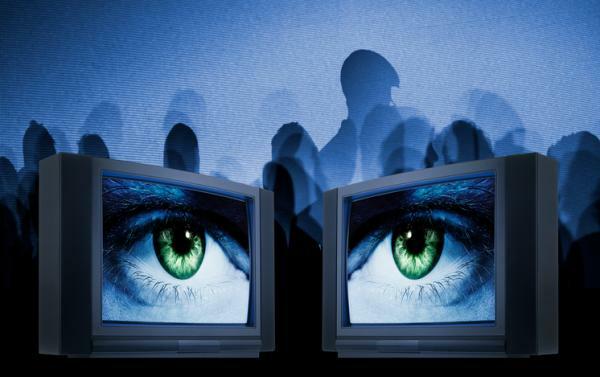
Clowns tend to associate with childhood situations, which carry positive emotions related to fun and entertainment. However, they have also been represented as a figure that produces terror. This perception is the one presented by people with coulrophobia, phobia of clowns, who experience authentic terror and fear at the image of the clown. In this Psychology-Online article, we will show you Clown Phobia or Coulrophobia: Symptoms, Causes and Treatment. If you are interested in this curious phobia, keep reading this article!
Index
- What is the phobia of clowns called?
- Origin of the phobia of clowns or coulrophobia
- Symptoms of clown phobia or coulrophobia
- Treatment for clown phobia or coulrophobia
What is the phobia of clowns called?
The phobia of clowns it's called coulrophobia and is part of the so-called anxiety disorders. Specifically, within the specific phobias or simple. Simple phobias are characterized by an irrational and intense fear of an object or situation, in this case clowns, mediated by irrational thoughts associated with said phobic stimulus. Specific phobias share three components: activation of our system, catastrophic or anxious thoughts, and avoidance behaviors. They are explained below:
- Activation of our system: said activation produces the appearance of the physical symptoms of the disorder itself, such as tachycardias, sweating, etc.
- Catastrophic or anxious thoughts: there is a tendency for the person to associate a catastrophic thought with the feared stimulus, for example, people who fear to fly may think the plane will fall, leading to anxious thoughts.
- Avoidance behaviors: the person tries to avoid the phobic stimulus as much as possible, presenting anticipatory anxiety when he knows that he must be exposed to it.
Origin of the phobia of clowns or coulrophobia.
The causes of clown phobia or coulrophobia are multifactorial. Specific phobias can be initiated by very different factors, but generally they are initiated by the living experiences, usually traumatic, that have caused an irrational fear of clowns due to irrational thoughts that have been associated with them. These experiences should not necessarily be experienced by oneself, they can be observed in other people. On the other hand, you are irrational beliefs they may have been established through erroneous information transmitted by other people, without the need for the person to have lived or observed it.
Symptoms of clown phobia or coulrophobia.
Although the phobic stimulus is different in the different forms of presentation of simple phobias, symptoms associated with specific phobia disorder they are the same. Therefore, the symptoms of clown phobia or coulrophobia are the following:
- Presence of a afraid or intense anxiety by a specific triggering stimulus.
- The phobic object or situation almost always elicits an immediate fear or anxiety reaction.
- Person seeks with all its efforts to avoid or actively resisting the object or situation.
- The fear or anxiety presented generates a disproportionate response to the real danger that the trigger represents.
- The presence of fear and anxiety are persistent, usually lasting six or more months.
- It generates a clinically significant discomfort, as well as a social, occupational deterioration and in other areas of the person's life.
In simple phobic disorder, it is necessary to specify the type of phobia of the object or the phobic situation, which can be situational, animal, natural environment, etc.
If the person is directly exposed to the feared situation, he may suffer a panic attack.
Treatment for clown phobia or coulrophobia.
For the treatment of clown phobia or coulrophobia it is recommended to use the cognitive behavioral therapy. Any intervention considered effective in the treatment of specific phobias must include the exposure technique, because it allows a habituation to the phobic stimulus. For its execution, the person suffering from the phobia of clowns establishes a set of hierarchies situational issues with the therapist, which he must face in a staggered way from least to greatest intensity. Exposure can be done "In vivo" or in imagination, that is, the exhibition can be made in reality. For example, a person who is afraid of elevators, the ultimate goal will be to ride an elevator or "In imagination”Where the person is asked to imagine the agreed hierarchy.
In treating clown phobia or coulrophobia, it is important not to jump from one hierarchy to the next until the previous one does not generate anxiety. Therefore, given the high anxiety experienced, it is also recommended that they be carried out relaxation techniques between the presentation of one hierarchy and the next or in the same. Here you can see relaxation techniques for adults.
On the other hand, we must bear in mind that thoughts play a fundamental role in phobic disorders, due to the establishment of a set of irrational thoughts around the phobic stimulus. Therefore, it is advisable to use the cognitive restructuring, with the aim of restructuring these negative thoughts associated with the phobic situation or object to others more adapted to reality and healthy.
It is recommended in the treatment of phobias to make use of anxiety control techniques, due to the high levels that occur. Some techniques for coping with anxiety could be relaxation or breathing techniques, such as diaphragmatic breathing or Jacobson's relaxation technique.
This article is merely informative, in Psychology-Online we do not have the power to make a diagnosis or recommend a treatment. We invite you to go to a psychologist to treat your particular case.
If you want to read more articles similar to Clown phobia or coulrophobia: symptoms, causes and treatment, we recommend that you enter our category of Clinical psychology.
Bibliography
- American Psychiatric Association. (2014). DSM-5. Diagnostic and Statistical Manual of Mental Disorders. Barcelona: Masson.
- Aragonès, E. (2013). The approach to phobias. FMC, 20, 347-350.
- Barlow. (1997). Treatment of specific phobias.
- Beck, A., Emery, G & Greenberg, R. (2014). Anxiety Disorders and Phobias: A Cognitive Perspective. Bilbao: Desclée de Brouwer.
- Sassaroli, S & Lorenzini, R. (2000). Fears and phobias: causes, characteristics and therapies. Barcelona: Paidós.


